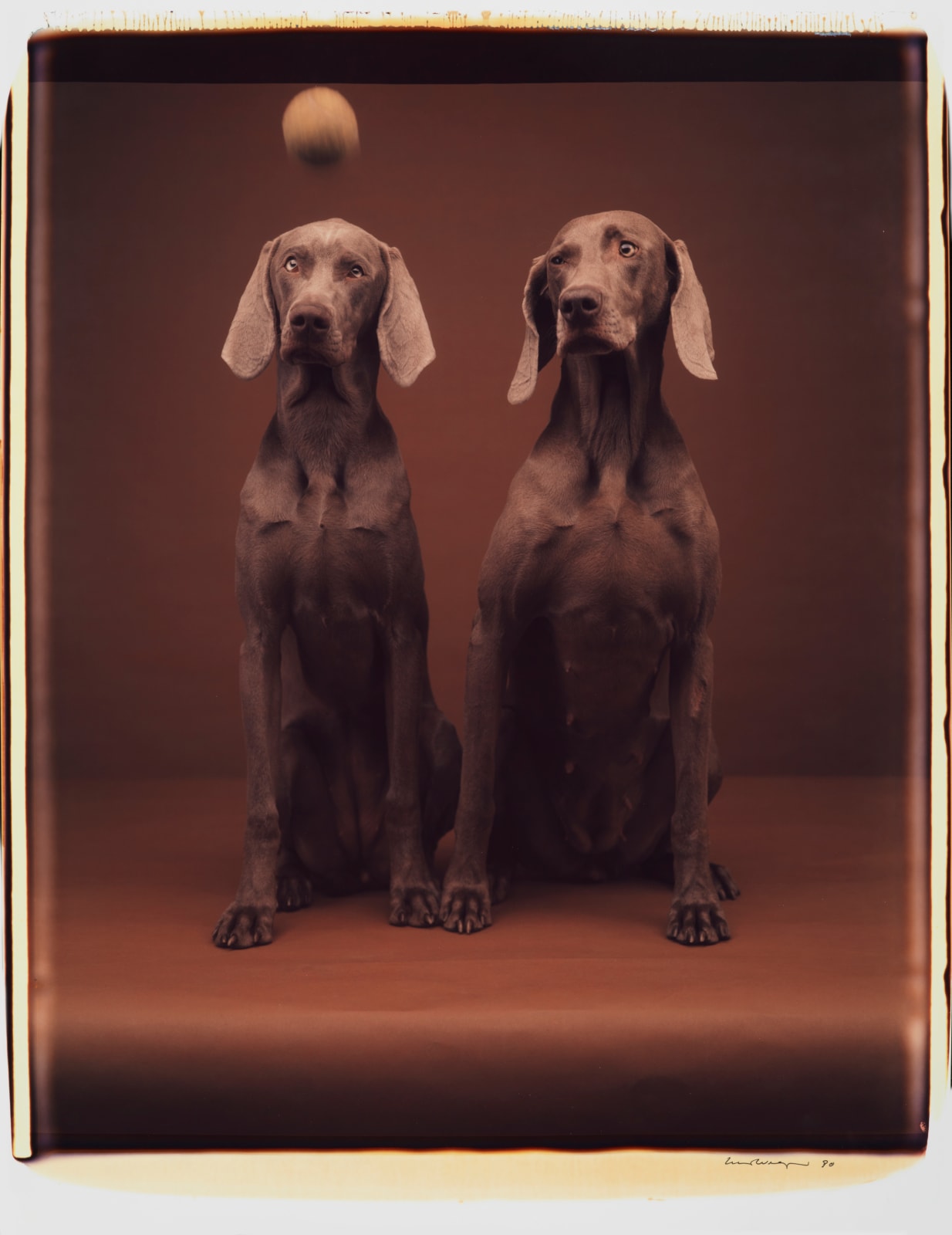
William Wegman American, b. 1943
.
24 x 20 in
.
This remarkable 20 x 24 inch Polaroid represents William Wegman at the height of his creative powers, working with photography's most legendary artist-subject collaboration.
Unlike conventional photography's endless reproducibility, these Polaroids existed as singular objects, their chemical development occurring within minutes. The camera's enormous bellows demanded meticulous calculation, often stopping down to f/90 to achieve razor sharpness across the frame.
The warm, sepia-toned background evokes Renaissance painting and Victorian portraiture while a suspended ball introduces kinetic possibility. The two Weimaraners, likely Fay Ray and her offspring, sit with characteristic stillness, their upward gaze transforming animal portraiture into meditation on attention, anticipation, and collaborative art-making itself.
Wegman emerged from West Coast Conceptual Art alongside Baldessari and Ruscha, interrogating artistic authority and cultural boundaries. By centering dogs as collaborators, he challenged hierarchies while exploring anthropomorphism and transformation. The work balances intellectual rigor with emotional accessibility, distinguishing Wegman from austere conceptualists.
The photograph embodies Polacolor's saturated yet muted palette, extraordinary resolution from direct contact printing, and singular physical presence. Working until Polaroid ceased production in 2007, Wegman created irreplaceable work exploring abstraction, surrealism, and endless variation. Each session became theatrical performance, dogs maintaining difficult poses while crews maneuvered the massive apparatus.
What emerges is an artist balancing formal sophistication with genuine warmth, creating images functioning as serious investigations and universally appealing visions of canine grace.
The melancholic quality in these dogs' eyes, reminiscent of clowns masking deeper emotion, adds psychological depth transcending species boundaries. This art refuses categorization, challenging assumptions about collaboration, authorship, and the porous boundaries between human and animal experience.